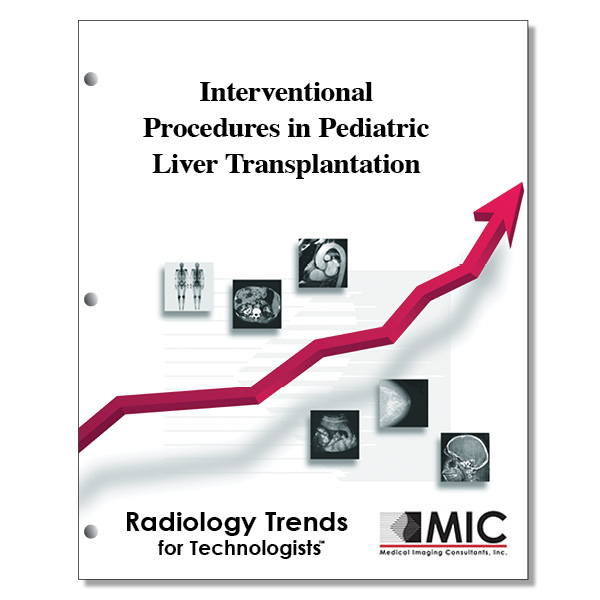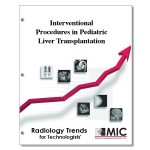

Interventional Procedures in Pediatric Liver Transplantation
An overview of the indications, technical considerations and expected results of interventional procedures in the pediatric liver.
Course ID: Q00334 Category: Radiology Trends for Technologists Modalities: Radiography, Vascular Interventional2.75 |
Satisfaction Guarantee |
$29.00
- Targeted CE
- Outline
- Objectives
Targeted CE per ARRT’s Discipline, Category, and Subcategory classification for enrollments starting after June 11, 2024:
[Note: Discipline-specific Targeted CE credits may be less than the total Category A credits approved for this course.]
Computed Tomography: 1.00
Procedures: 1.00
Abdomen and Pelvis: 1.00
Magnetic Resonance Imaging: 1.00
Procedures: 1.00
Body: 1.00
Registered Radiologist Assistant: 2.75
Procedures: 2.75
Abdominal Section: 2.75
Sonography: 1.75
Procedures: 1.75
Abdomen: 1.75
Radiation Therapy: 1.00
Patient Care: 0.50
Patient and Medical Record Management: 0.50
Procedures: 0.50
Treatment Sites and Tumors: 0.50
Vascular-Interventional Radiography: 2.75
Procedures: 2.75
Vascular Interventional Procedures: 1.50
Nonvascular Procedures: 1.25
Vascular Sonography: 1.00
Procedures: 1.00
Abdominal/Pelvic Vasculature: 1.00
Outline
- Introduction
- Diagnosis of Graft Disease
- Percutaneous Liver Biopsy
- Transjugular Liver Biopsy
- Treatment of Vascular Complications
- Hepatic Artery Stenosis
- Hepatic Artery Thrombosis
- Hepatic Vein Stenosis
- Inferior Vena Cava Stenosis
- Portal Vein Stenosis
- Treatment of Biliary Complications
- Anastomotic Biliary Strictures
- Intrahepatic Biliary Strictures and Bilomas
- Isolated Draining Intrahepatic Biliary Ducts
- Bile Leakage
- Summary
Objectives
Upon completion of this course, students will:
- know the most common type of pediatric liver transplant
- know the role of radiology in pediatric liver transplantation programs
- understand the imaging modality most often used for performing percutaneous liver biopsies
- understand how a percutaneous liver biopsy is performed
- know proper post liver biopsy procedures
- know the contraindications of percutaneous liver biopsy
- understand how a transjugular liver biopsy is performed
- know which imaging modalities help reduce the risk of capsule perforation
- know the contraindications of transjugular liver biopsy
- know when most vascular complications appear following transplantation
- know the percentage of patients that develop hepatic artery stenosis
- understand the causes of hepatic artery stenosis
- appreciate the benefits of early diagnosis of hepatic artery stenosis and early intervention
- know proper hepatic arteriography procedures
- comprehend abnormal trans-stenotic pressure gradients
- know what defines procedural success after hepatic artery stenosis intervention
- know the imaging modality that is most commonly used for follow up evaluation of flow
- understand hepatic artery thrombosis
- know the current treatment options for hepatic artery thrombosis
- understand hepatic vein stenosis
- know the treatment options for hepatic vein stenosis
- recognize abnormal pressure gradients in hepatic vein stenosis
- know when metallic stents are appropriate for hepatic vein stenosis
- know where inferior vena cava stenoses usually occur
- know the treatment for vena cava stenosis
- understand portal vein stenosis
- know the treatment for portal vein stenosis
- comprehend biliary complications in pediatric liver transplants
- know when biliary complications occur
- understand MR cholangiography
- understand hepatobiliary scintigraphy
- know proper percutaneous transhepatic cholangiography techniques
- know what causes intrahepatic biliary strictures
- comprehend how isolated draining biliary ducts are treated
- be familiar with the usual treatment for bile leaks
